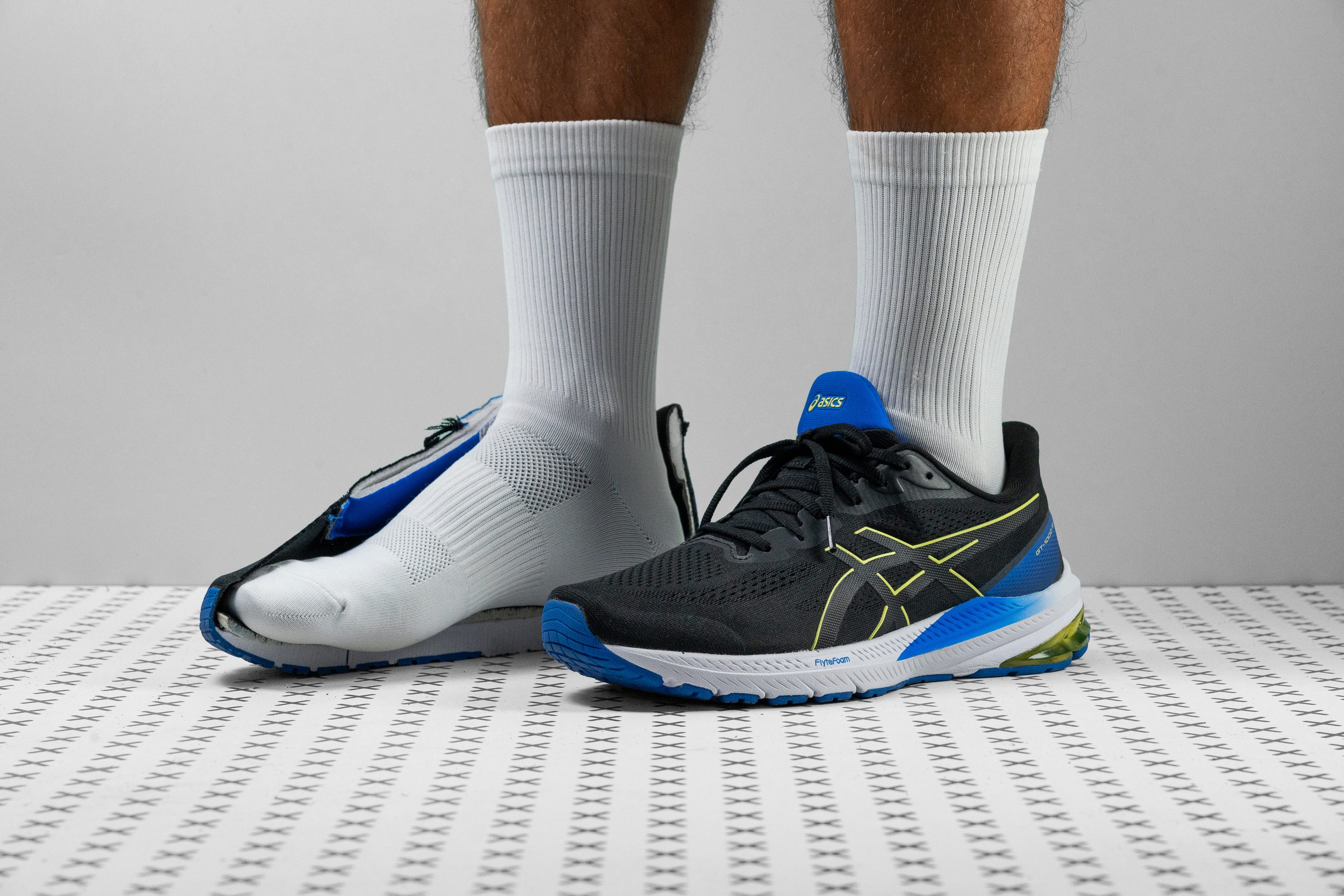Our verdict
- Top pick in best cheap running shoes (2023)
Pros
- Incredible value for the price
- Cushioned and soft midsole
- Offers great stability
- GEL technology in the heel
- Perfectly comfortable for cross-training or walking
- Built to endure long-distance runs
- Offers exceptional breathability
- Durable outsole with a long lifespan
Cons
- Flytefoam could offer better energy return
- Upper lacks durability
Audience verdict
Comparison
The most similar running shoes compared
+ + Add a shoe | |||||
|---|---|---|---|---|---|
| Audience score | 84 Good! | 91 Superb! | 89 Great! | 81 Good! | |
| Price | $100 | $145 | $140 | $110 | |
| Pace | Daily running | Daily running | Daily running | Daily running | |
| Shock absorption | Moderate | - | Moderate | Moderate | |
| Energy return | Low | - | High | Low | |
| Traction | Moderate | - | Moderate | High | |
| Arch support | Stability | Stability | Stability | Stability | |
| Weight lab Weight brand | 9.6 oz / 271g 9.5 oz / 269g | 9.2 oz / 261g 9.6 oz / 272g | 9.8 oz / 279g 9.8 oz / 278g | 9.6 oz / 272g 9.3 oz / 265g | |
| Drop lab Drop brand | 7.2 mm 8.0 mm | 4.0 mm 4.0 mm | 10.0 mm 10.0 mm | 9.6 mm 8.0 mm | |
| Strike pattern | Mid/forefoot | Mid/forefoot | HeelMid/forefoot | HeelMid/forefoot | |
| Size | True to size | True to size | True to size | Slightly small | |
| Midsole softness | Soft | Balanced | Balanced | Soft | |
| Difference in midsole softness in cold | Big | Big | Small | Normal | |
| Toebox durability | Bad | Decent | Decent | Decent | |
| Heel padding durability | Good | Decent | Bad | Good | |
| Outsole durability | Good | Decent | Decent | Good | |
| Breathability | Breathable | Moderate | Moderate | Warm | |
| Width / fit | Medium | Medium | Medium | Medium | |
| Toebox width | Wide | Wide | Wide | Medium | |
| Stiffness | Moderate | Stiff | Flexible | Moderate | |
| Torsional rigidity | Moderate | Moderate | Moderate | Stiff | |
| Heel counter stiffness | Moderate | Moderate | Stiff | Moderate | |
| Heel lab Heel brand | 30.2 mm 30.0 mm | 29.9 mm 30.0 mm | 33.1 mm 36.0 mm | 35.4 mm 34.5 mm | |
| Forefoot lab Forefoot brand | 23.0 mm 22.0 mm | 25.9 mm 26.0 mm | 23.1 mm 26.0 mm | 25.8 mm 26.5 mm | |
| Widths available | NormalWideX-Wide | Normal | Normal | NormalWideX-Wide | |
| Orthotic friendly | ✓ | ✓ | ✓ | ✓ | |
| Season | SummerAll seasons | All seasons | All seasons | All seasons | |
| Removable insole | ✓ | ✓ | ✓ | ✓ | |
| Ranking | #486 Bottom 26% | #26 Top 7% | #112 Top 30% | #305 Bottom 18% | |
| Popularity | #366 Bottom 44% | #230 Bottom 38% | #259 Bottom 30% | #153 Top 41% |
Who should buy
The ASICS GT 1000 12 stands out for several reasons. We found that it's a top pick for:
- Folks looking for a budget-friendly and plush stability shoe.
- Runners wanting a do-it-all shoe that offers more stability than your average neutral trainer.
- Anyone on the hunt for a stability running shoe that offers out-of-this-world breathability and comfort.

Who should NOT buy
The key area where we found the GT 1000 12 might not meet everyone's expectations is its midsole. By today's standards, it's on the thinner side. If you're in the market for a shoe with more cushioning, you might be left wanting. For those seeking more foam, the ASICS Gel Kayano 30 and Hoka Gaviota 5 are solid choices, but they come with a heftier price tag.
In our view, runners who lean towards a shoe with a natural, firmer feel and better energy return might need to look elsewhere. The Saucony Guide 16 is a nice alternative for them, as the GT 1000 12 isn't designed with these features in mind.

Cushioning
Shock absorption
As the smaller sibling of the GT 2000 series, we didn’t expect huge shock absorption since it packs a thinner midsole. But the 86 SA we found in the forefoot seems ideal only for lightweight runners, while heel strikers are better covered with 114 SA.
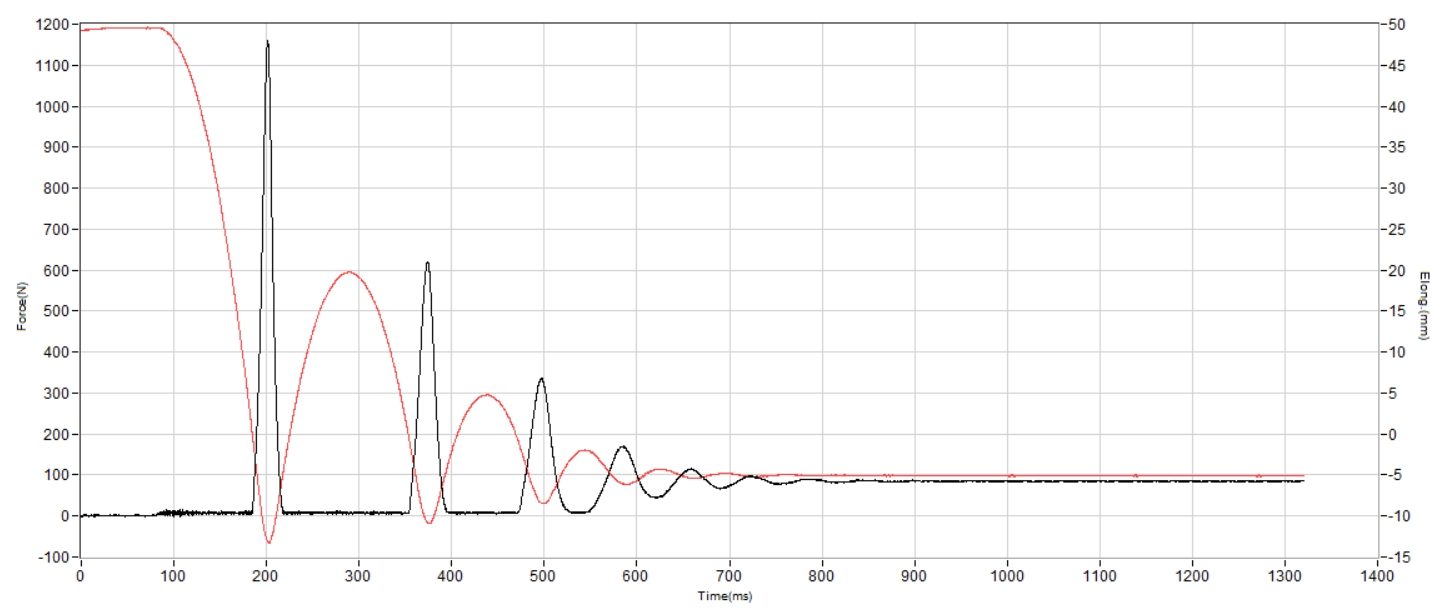
| GT 1000 12 | 114 SA |
| Average | 129 SA |
Energy return
The weakest part of the GT 1000 12 is clearly its lack of energy return. We measured just 45.8% in the heel, which makes it feel flat and unexciting, especially when trying to run faster or push the pace.
| GT 1000 12 | 45.8% |
| Average | 58.5% |
Heel stack
When we examined the midsole, we found a 30.2 mm stack height in the heel. While this might seem low-profile compared to current trends, it provides a respectable amount of cushioning.
Yet, for heavy runners who aim to have more cushion combined with support, the Brooks GTS Adrenaline 23 offers a heel stack of 34.1 mm.
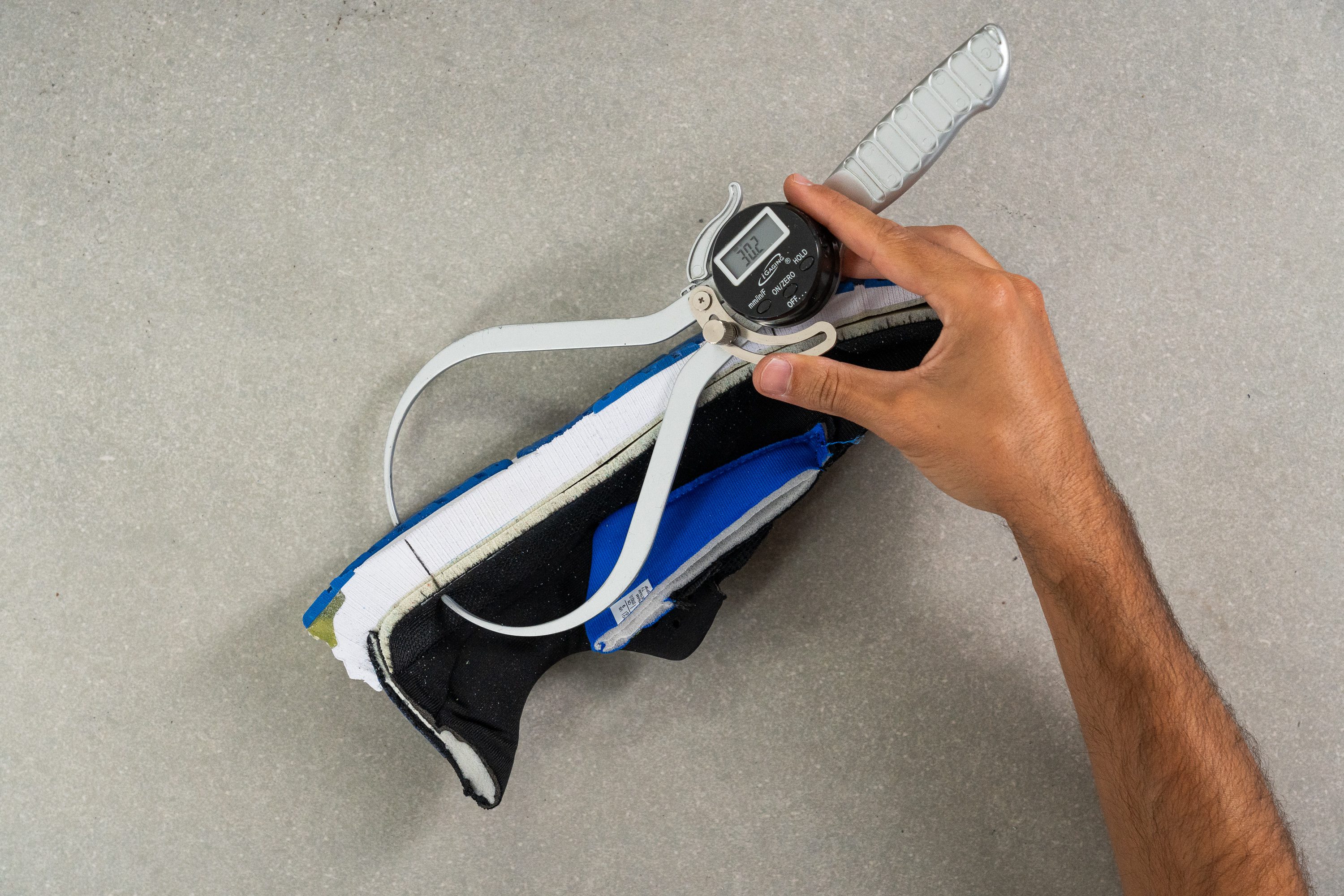
| GT 1000 12 | 30.2 mm |
| Average | 34.8 mm |
Forefoot stack
At the forefoot measuring point, we discovered a stack height of 23.0 mm.
This is much like what we found in the heel—ample for most runners and a good balance for maintaining a lighter shoe weight.

| GT 1000 12 | 23.0 mm |
| Average | 26.2 mm |
Drop
The difference between the heel and forefoot gives a 7.2-mm heel-to-toe drop. We found that this design approach suits nearly all runners, regardless of which part of the foot first hits the ground during a run.

| GT 1000 12 | 7.2 mm |
| Average | 8.6 mm |
Midsole softness
The ASICS GT 1000 12 isn't ASICS' top-of-the-line stability shoe. So, in our lab, we found that obviously it doesn't have their best training foam (FF Blast+).
The midsole mainly consists of Flytefoam—a soft EVA. Its main drawback? It doesn't offer much energy return. But rest assured, it's a great midsole unless you're looking for peak performance.
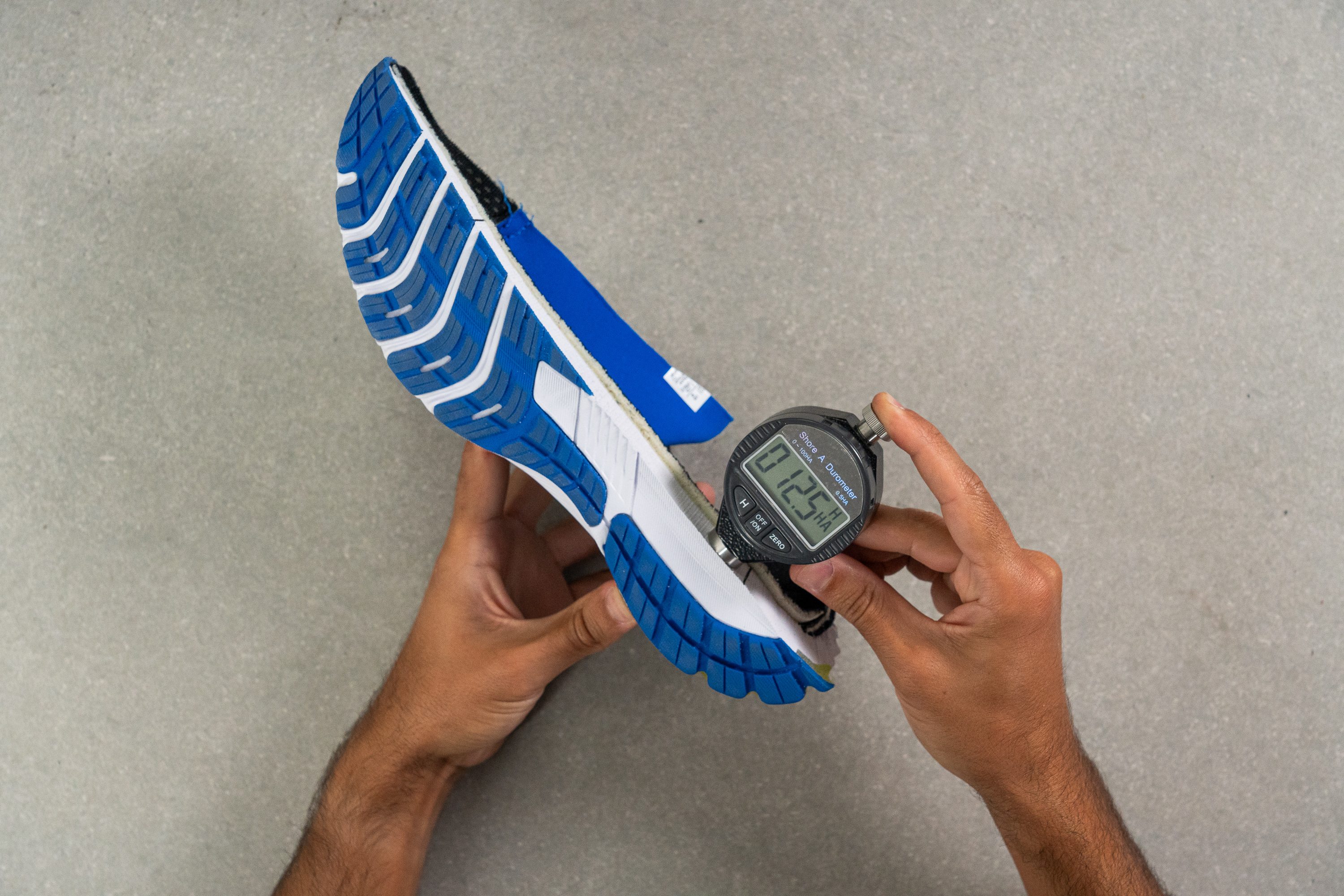
| GT 1000 12 | 12.8 HA |
| Average | 20.4 HA |
Size and fit
Size
ASICS GT 1000 12 fits true to size (83 votes).
Width / Fit
The earlier version of the GT 1000 wasn't too welcoming for those with wide feet. Recognizing this, ASICS redesigned the upper to be more accommodating.
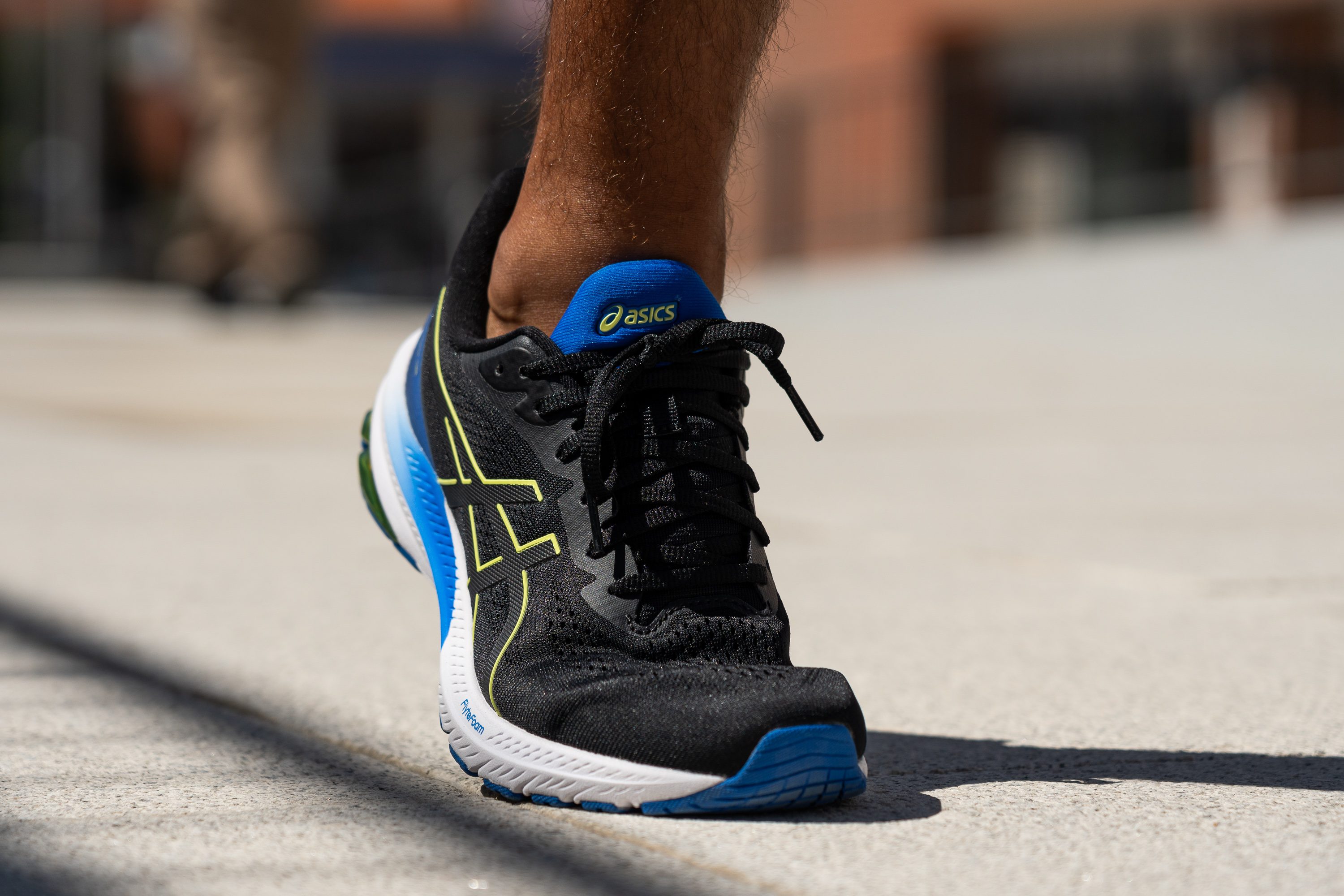
We measured it and found that at its broadest point, it's a generous 100.7 mm. This change means it now comfortably fits a wider range of foot shapes.
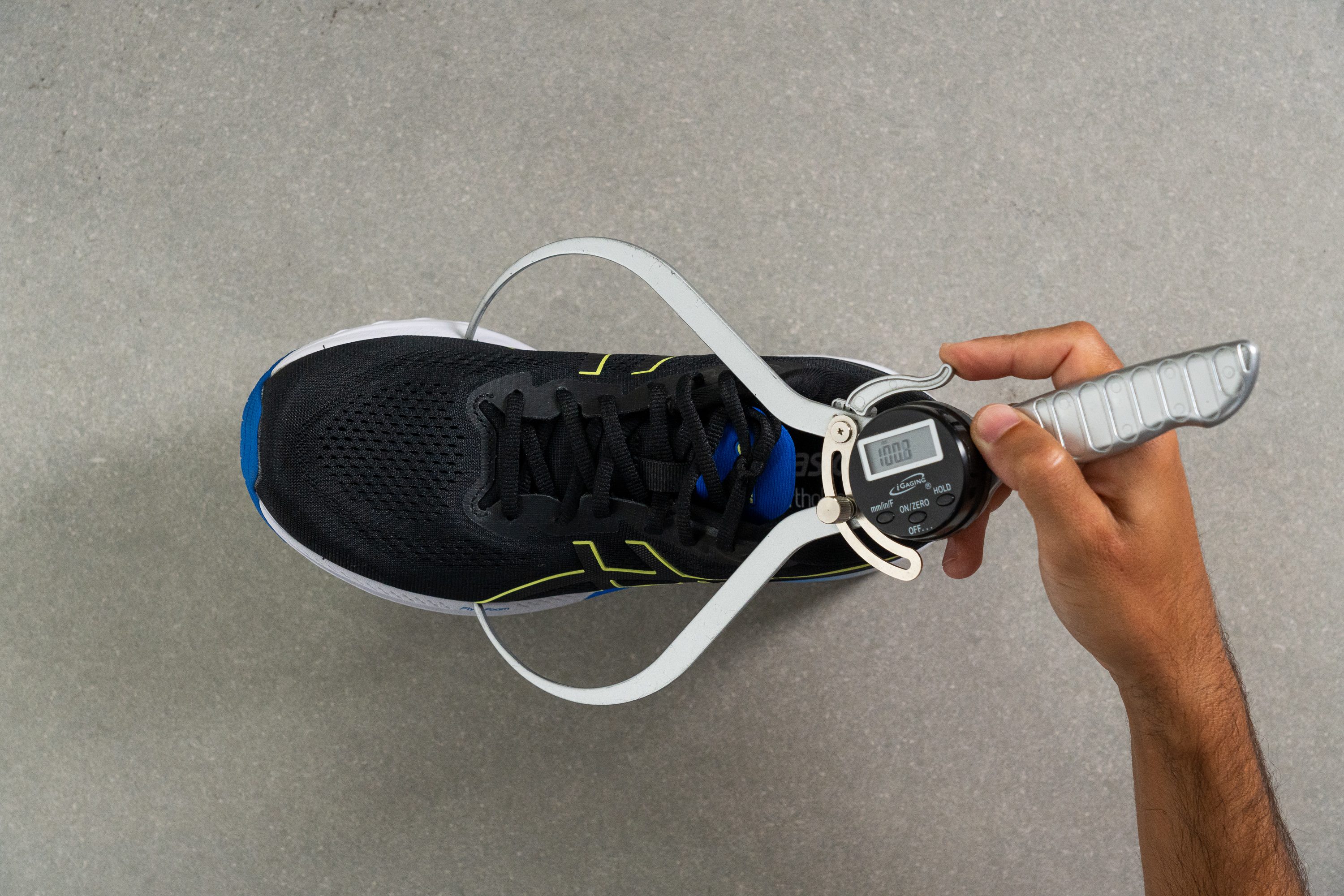
This test follows an older methodology, which is why you don't see recently tested shoes in the chart. Results from different methodologies can not be compared.
| GT 1000 12 | 100.7 mm |
| Average | 98.5 mm |
Toebox width
In the area around the big toe, the shoe maintains its roomy design. We measured it and discovered that at 79.7 mm, it offers more width than many other running shoes in the market.
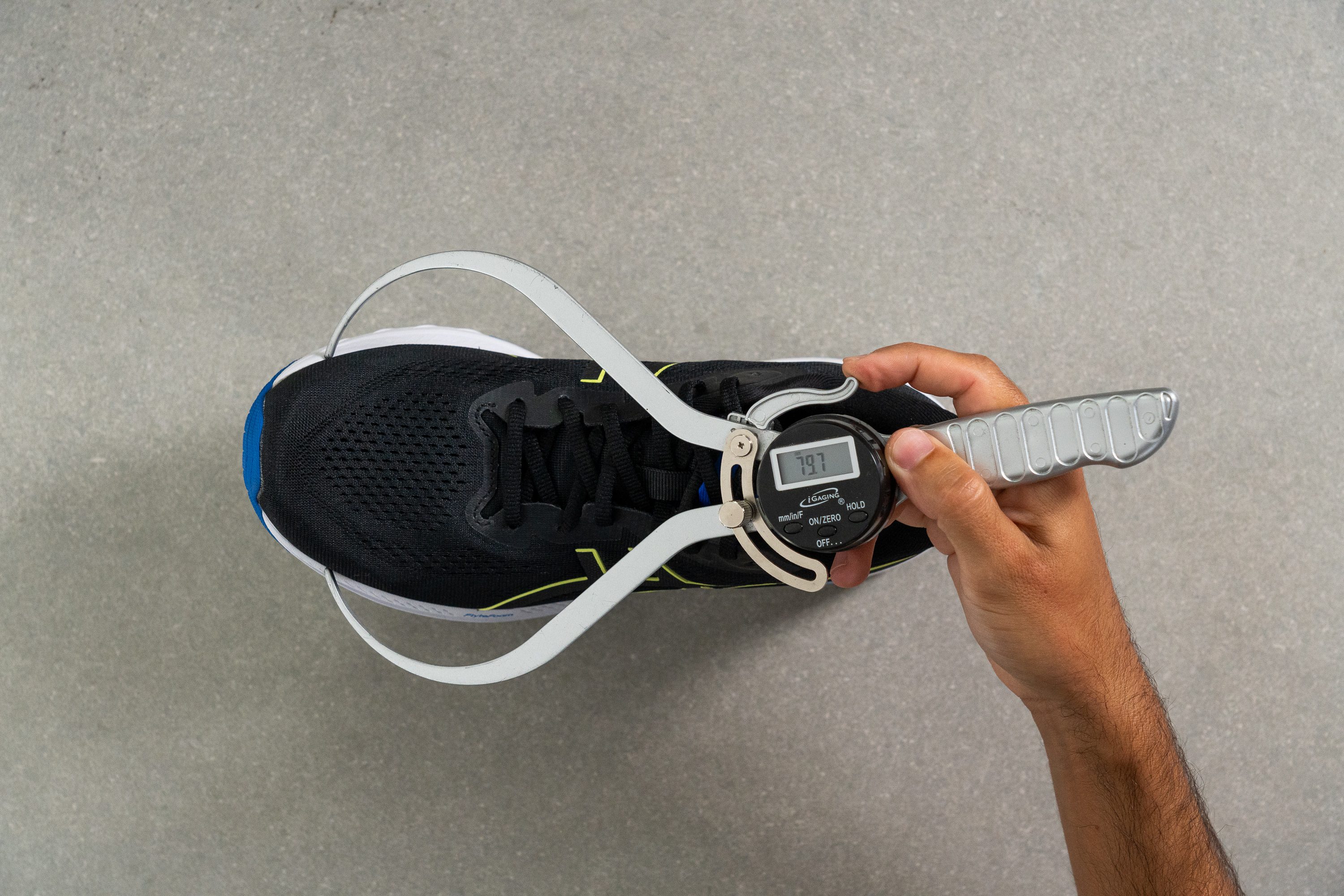
This test follows an older methodology, which is why you don't see recently tested shoes in the chart. Results from different methodologies can not be compared.
| GT 1000 12 | 79.7 mm |
| Average | 78.4 mm |
Traction / Grip
Traction test
We recorded a 0.37 score in our wet-condition lab test—positioning this shoe’s traction right in the average range for slick pavement. It didn’t shine in wet weather, but we think most runners will find it sufficient for daily mileage.
Still, those looking for ultra-confident wet-weather grip or storm-ready performance might prefer models with better traction.
| GT 1000 12 | 0.37 |
| Average | 0.48 |
Outsole design
The outsole of the GT 1000 12 features full-length rubber coverage with blue AHAR segments strategically placed across high-wear zones. These rubber pods are integrated into a white foam base, allowing visible separation between each rubber piece for increased flexibility.

Flexibility / Stiffness
Remember when we mentioned the outsole cutouts designed to boost the shoe's flexibility? Well, they're genuinely working wonders. Paired with the plush Flytefoam midsole, the shoe boasts remarkable flexibility.
In our lab test, with a reading of just 10.9N at a 30-degree bend, this shoe stands out as one of the most impressively flexible models we've ever encountered in the mild-stability category.
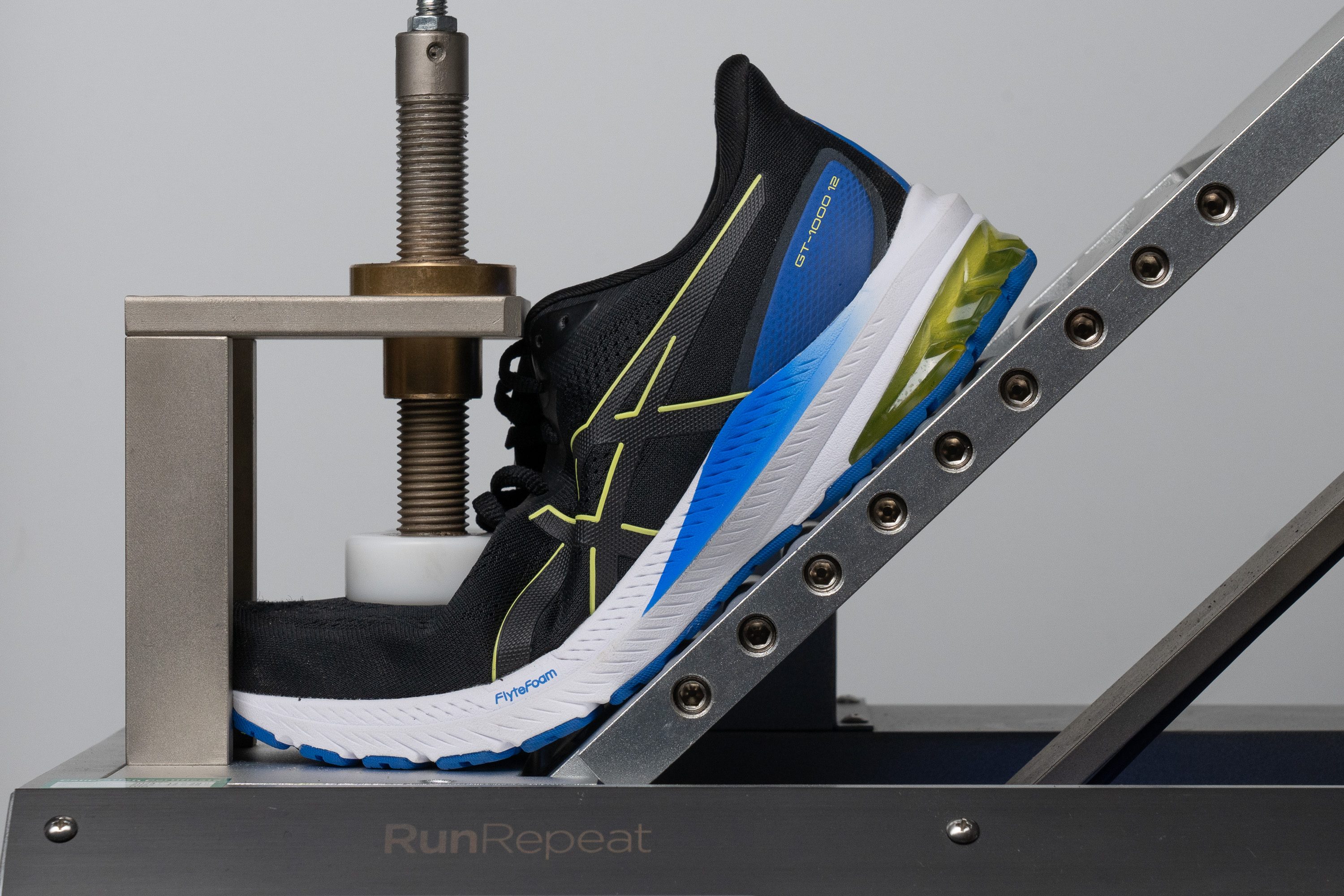
| GT 1000 12 | 10.9N |
| Average | 15.3N |
Stiffness in cold (%)
The Flytefoam midsole became too firm after its time in the freezer, but its stiffness didn't change much. We measured it again in the lab and got a reading of 14.8N. That's good news!
We measured a 23.8% increase, which is impressive. It even beats some of the premium shoes!
| GT 1000 12 | 24% |
| Average | 33% |
Weight
And there's more good news! Weighing in at a sleek 9.6 oz (271g), this shoe is a standout contender for the best budget-friendly stability shoe out there. It's not that usual for us to test stability shoes that weigh below 10 oz.
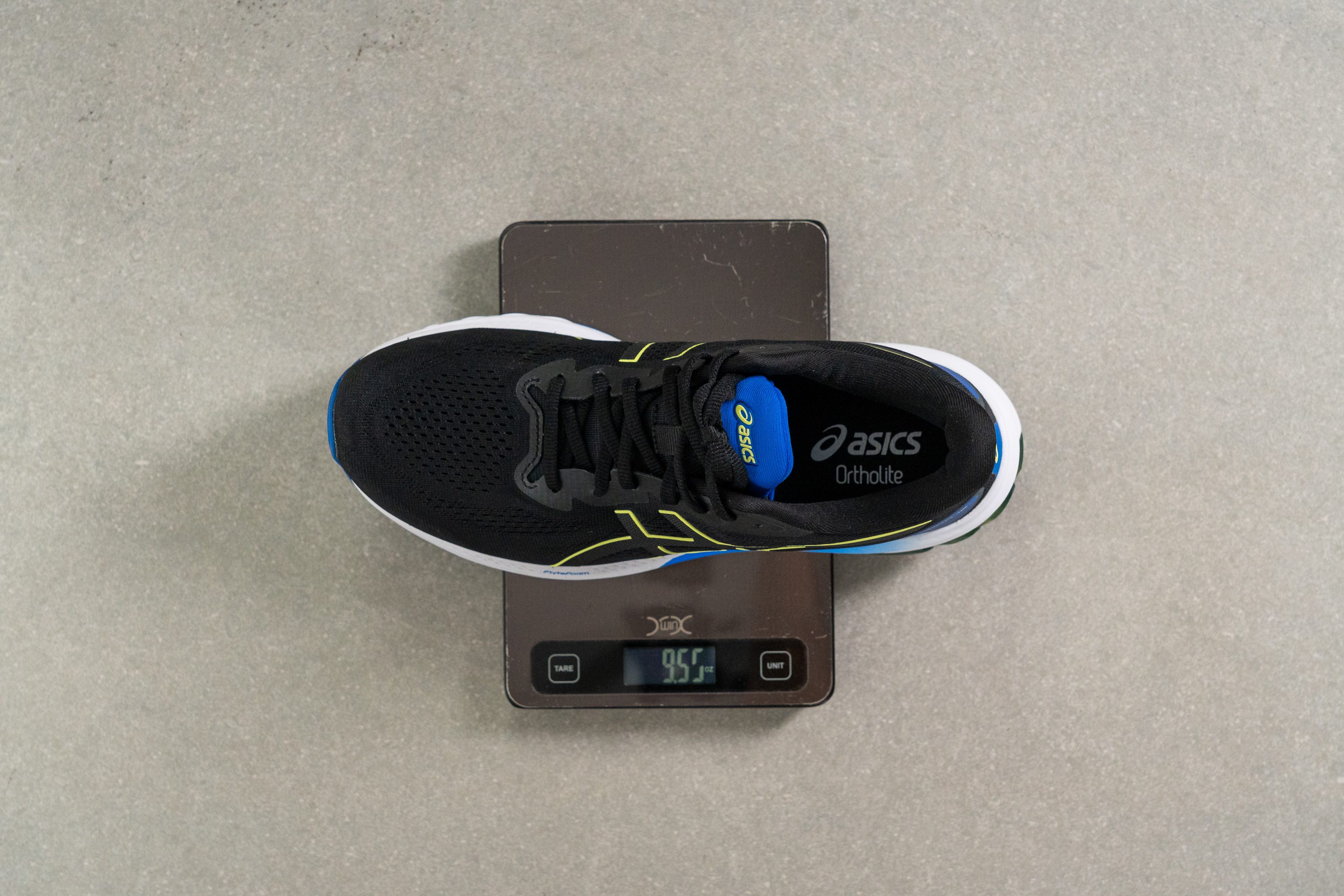
| GT 1000 12 | 9.6 oz (271g) |
| Average | 9.3 oz (264g) |
Breathability
Hyper-breathable monomesh uppers often feature in premium, pricey shoes like the ASICS Metaspeed Sky+. However, the GT 1000's 12th version by ASICS challenges that notion, offering a top-tier upper at an affordable rate.
We're always excited for the breathability test in our lab. It's not just because watching it is fascinating, but it truly helps us gauge airflow in every shoe.
After employing our smoke-pumping machine on the GT 1000 12, we happily awarded it a perfect 5/5 score. This score demonstrates its impressive performance!
So, how does this shoe achieve such stellar airflow? We discovered that it's largely due to the countless breathability holes in the upper.
Unlike many other shoes that have these holes primarily in the toebox, the GT 1000 12 boasts them in the medial section too. This is a rare feature and can be game-changing for runners in warmer regions.
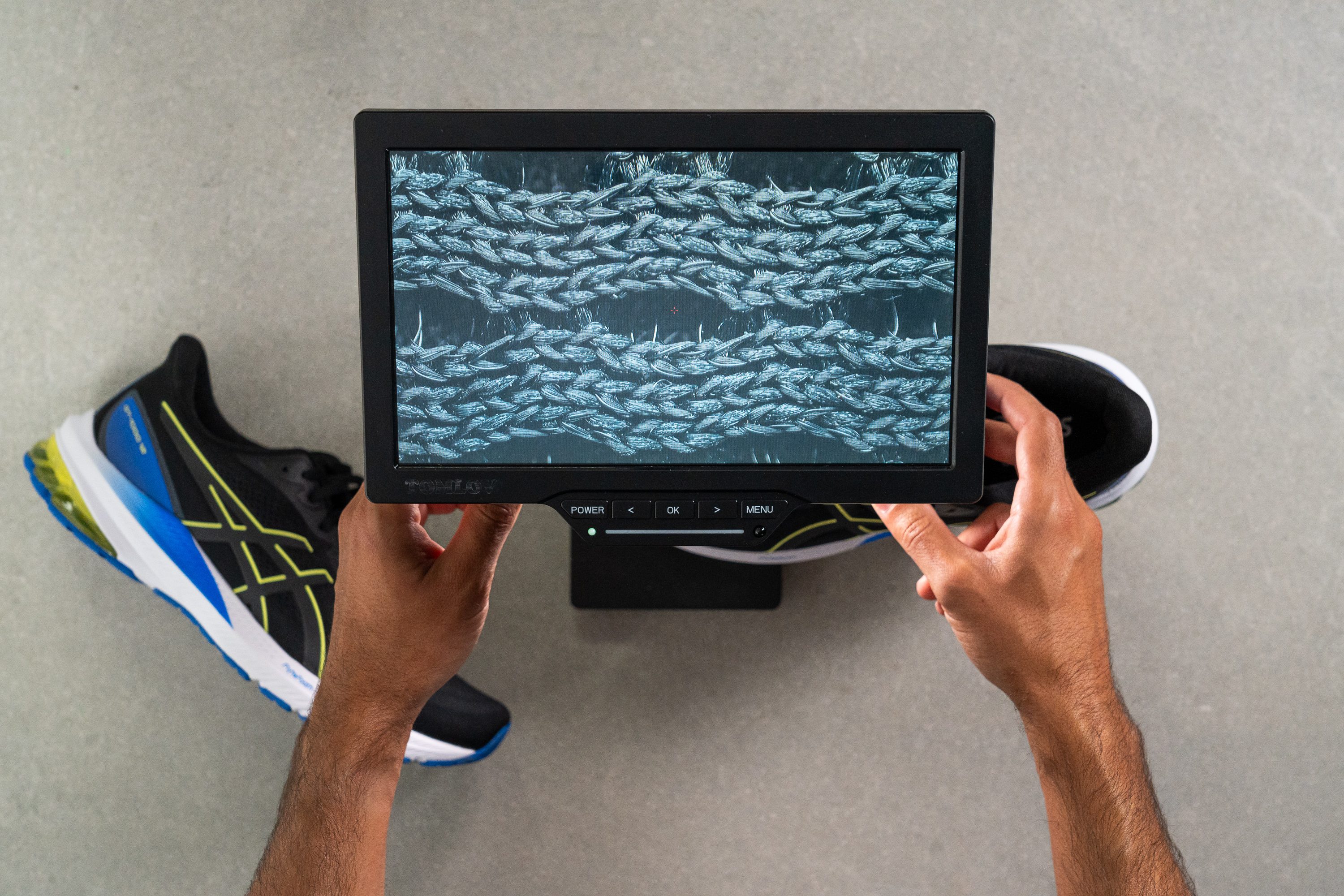
Finally, we turned to our microscope in the lab. We wanted to closely inspect those breathability holes.

Upon closer look, we found that ASICS uses a two-layer setup in the engineered mesh, ensuring that while air flows freely, the holes are still protected.
| GT 1000 12 | 5 |
| Average | 3.7 |
Stability
Lateral stability test
Promoted by ASICS as a budget-friendly stability daily trainer, we were eager to test it. Indeed, we found it to be very stable.
ASICS integrated GEL—a classic feature of the Japanese brand—into the outer portion of the heel. This helps offset the potential instability from the soft foam and subtly corrected our stride when running.
Torsional rigidity
The ASICS GT 1000 11 was an excellent cross-training or walking shoe. Its outstanding comfort in the past made us hope for a continuation of that trend. Thankfully, this model lived up to our hopes.
We assigned it a score of 3/5—a surprisingly low figure for a stability shoe, indicating its commendable flexibility and great comfort.
| GT 1000 12 | 3 |
| Average | 3.5 |
Heel counter stiffness
This trend continues with the heel counter. Instead of aiming for extreme stiffness to guarantee maximum stability, the 3/5 score indicates ASICS sought a balance with comfort.
| GT 1000 12 | 3 |
| Average | 2.9 |
Midsole width - forefoot
We've measured the width of the GT 1000 12 at 114.9 mm, and for a stability shoe, it falls short.
Ideally, we'd want ample width to guarantee neutral landings. While it's a bit wider than the previous model, it only earns a D from us in this exam.

| GT 1000 12 | 114.9 mm |
| Average | 114.4 mm |
Midsole width - heel
After the forefoot, we measured the heel. We found that at 90.8, it's pretty average when stacked against other shoes. However, for a stability shoe, it slightly misses the mark.
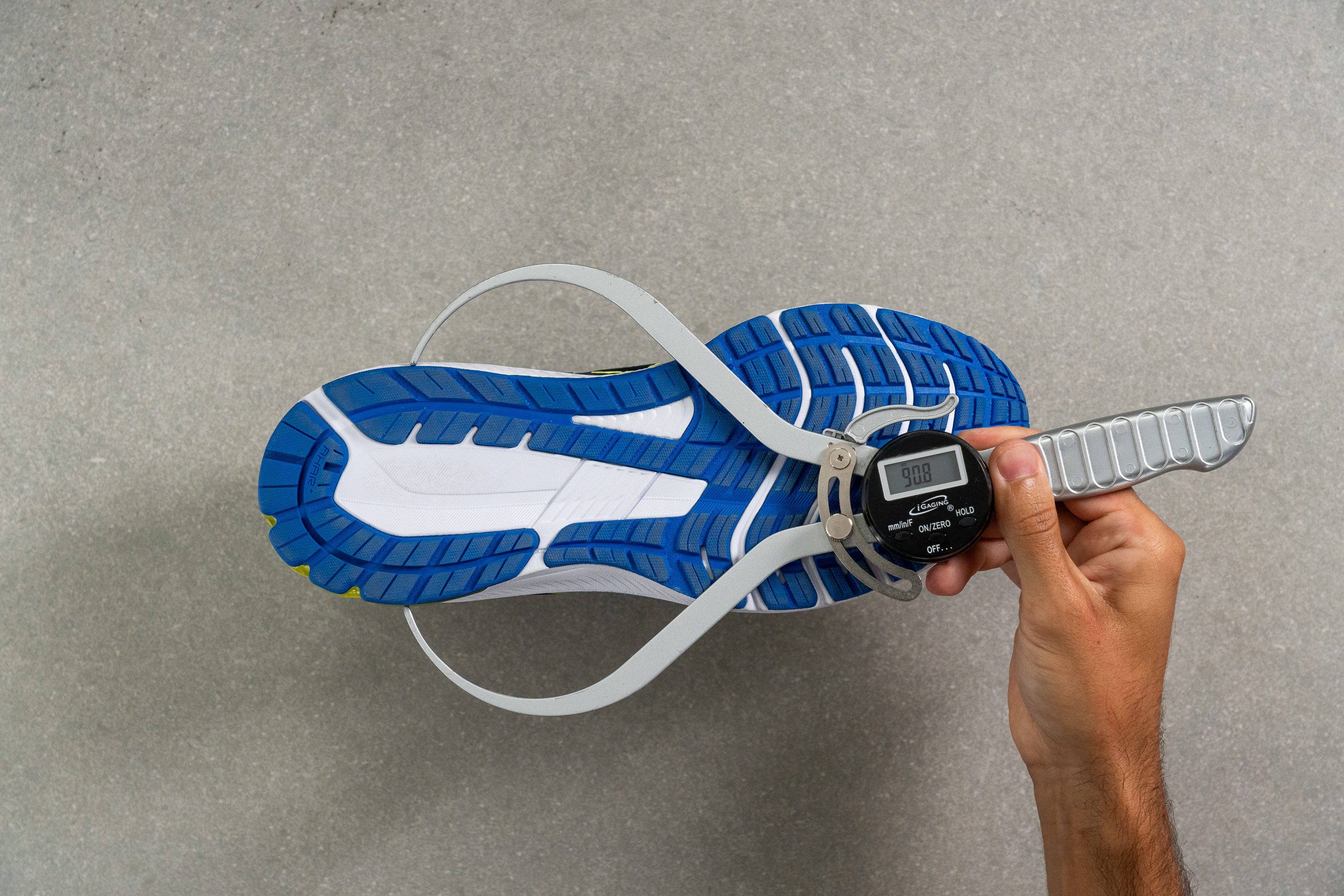
| GT 1000 12 | 90.8 mm |
| Average | 90.7 mm |
Durability
Toebox durability
Typically, when shoes excel in airflow, they compromise on the durability of the upper, and we found this to be true here.
Sadly, after putting the GT 1000 12 to the test, we had to gave it a mere 1/5. The upper couldn't withstand our Dremel and passed away in record time. The comparison with the On Cloudswift 3 is striking.
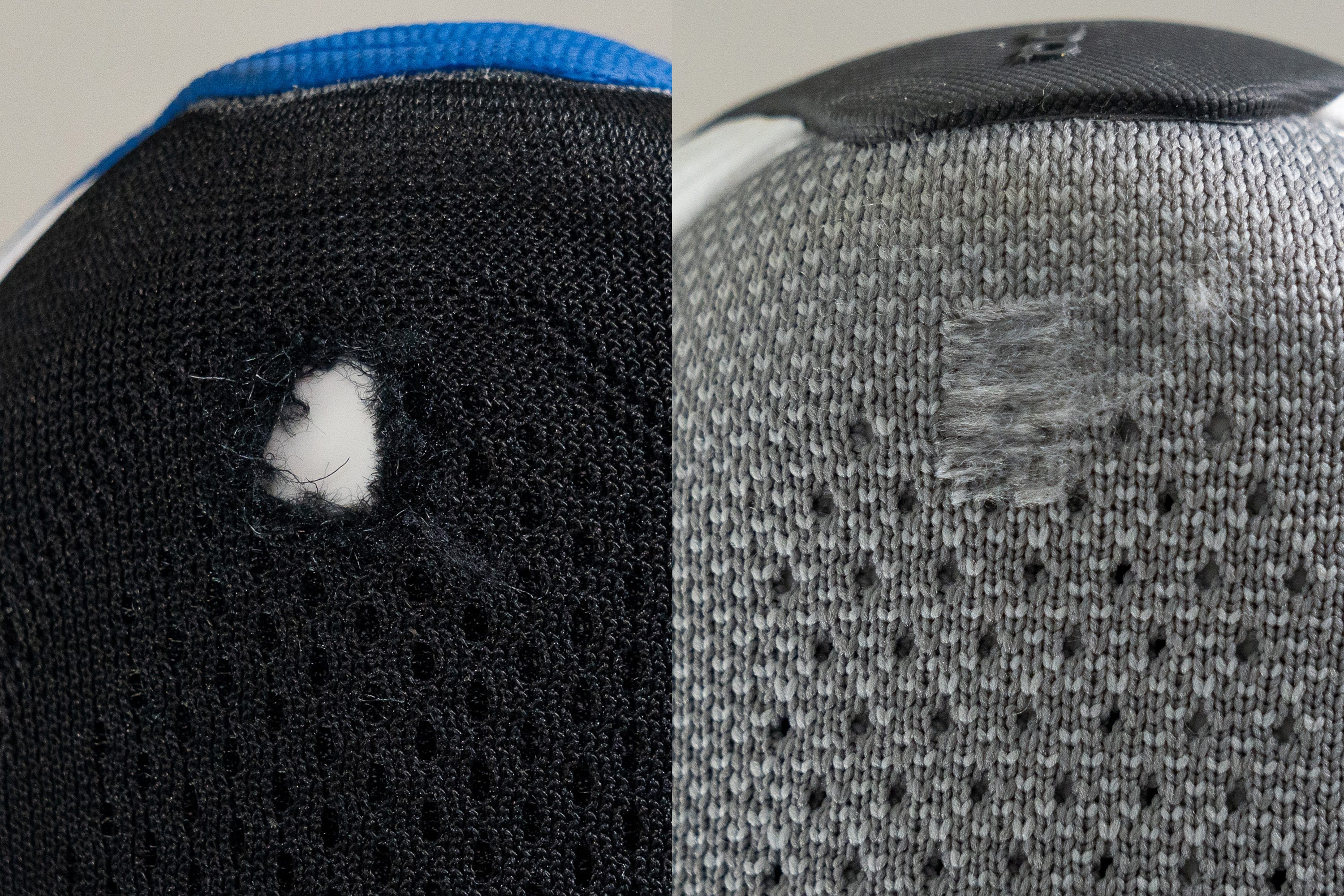
| GT 1000 12 | 1 |
| Average | 2.6 |
Heel padding durability
When we examined the heel, we had admittedly low expectations. Often, a low score in the toebox tends to indicate a similar outcome in the heel padding. Yet, this ASICS pleasantly surprised us. We were genuinely astounded by the results—an impressive perfect score of 5/5, a rarity in this test.
For runners who often experience wear and tear in the heel padding, this shoe might be the answer. The leap from the ASICS GlideRide 3 is truly remarkable—such a significant improvement!

| GT 1000 12 | 5 |
| Average | 3.4 |
Outsole durability
The answer is... no!
We put the Dremel to work one more time and were pleased to discover that it only managed to create a 0.7-mm indentation in the rubber.
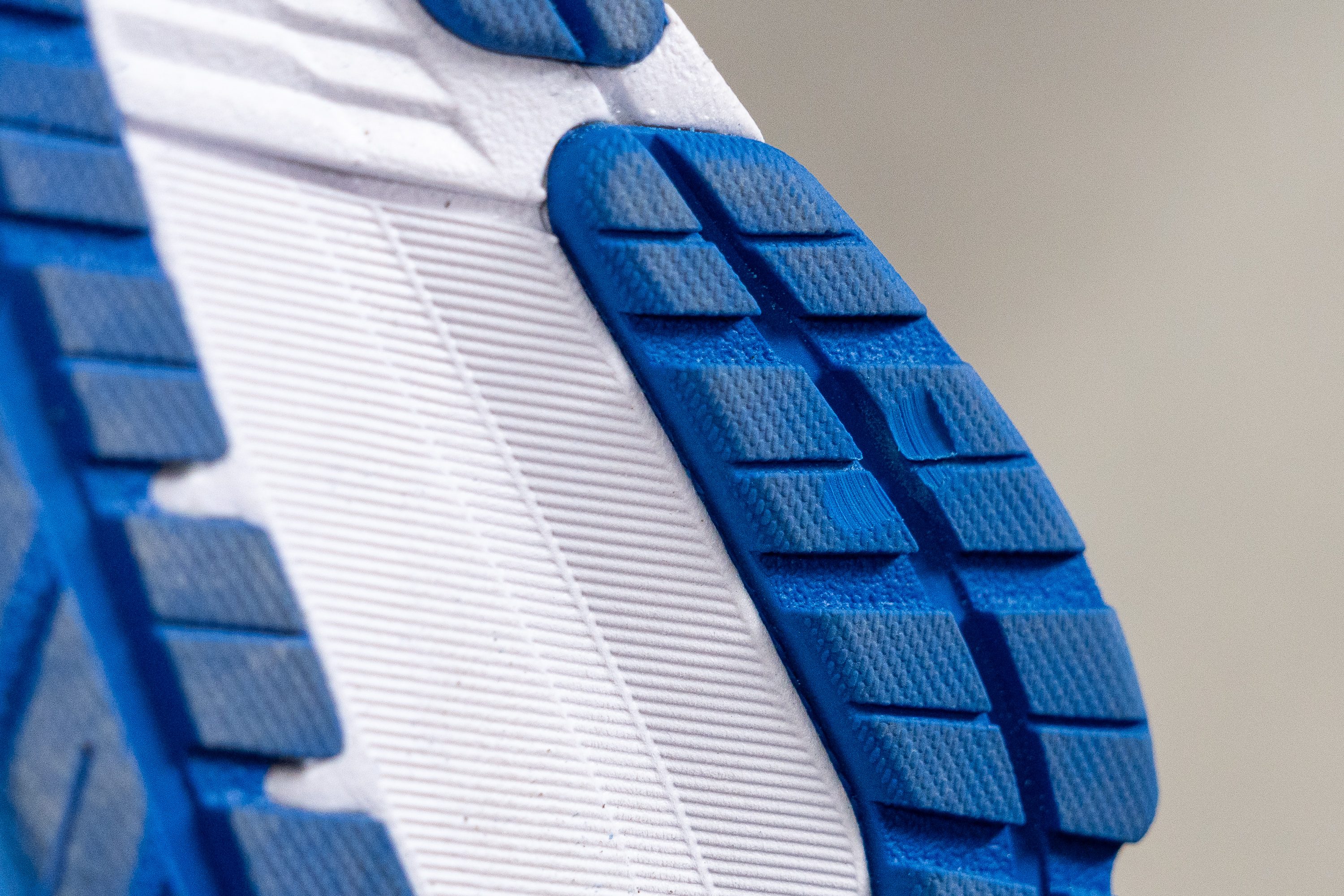
| GT 1000 12 | 0.7 mm |
| Average | 1.1 mm |
Outsole thickness
Adding to its impressive features, the ASICS designers made sure to prioritize durability in the shoe's outsole.
In our lab tests, we measured 4.8 mm of rubber—significantly more than the average shoe. They clearly wanted to ensure that this one wouldn't wear out quickly.
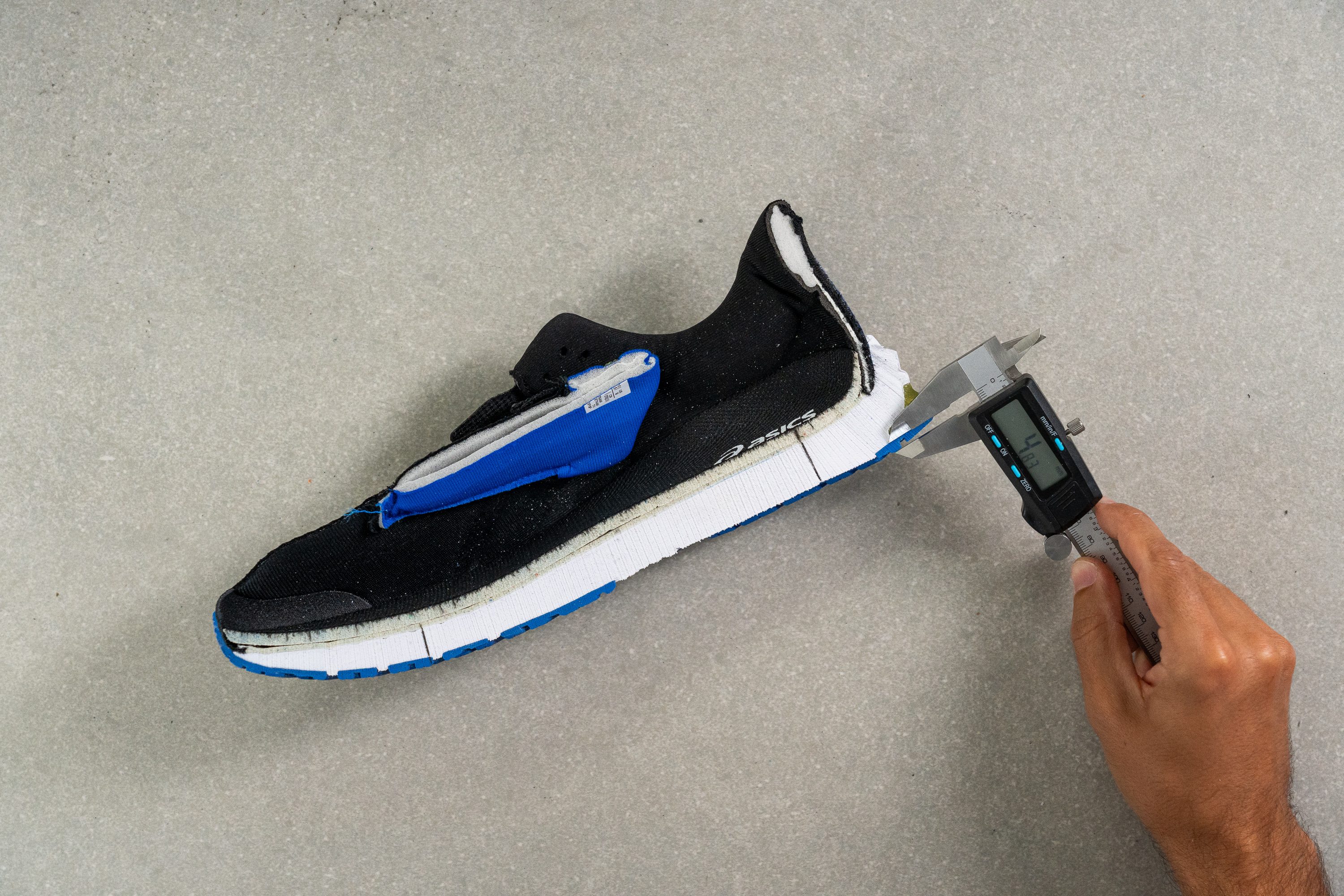
| GT 1000 12 | 4.8 mm |
| Average | 3.2 mm |
Misc
Insole thickness
Our measurements show a 4.7-mm insole—pretty standard in thickness. It's lightweight and provides ample comfort.
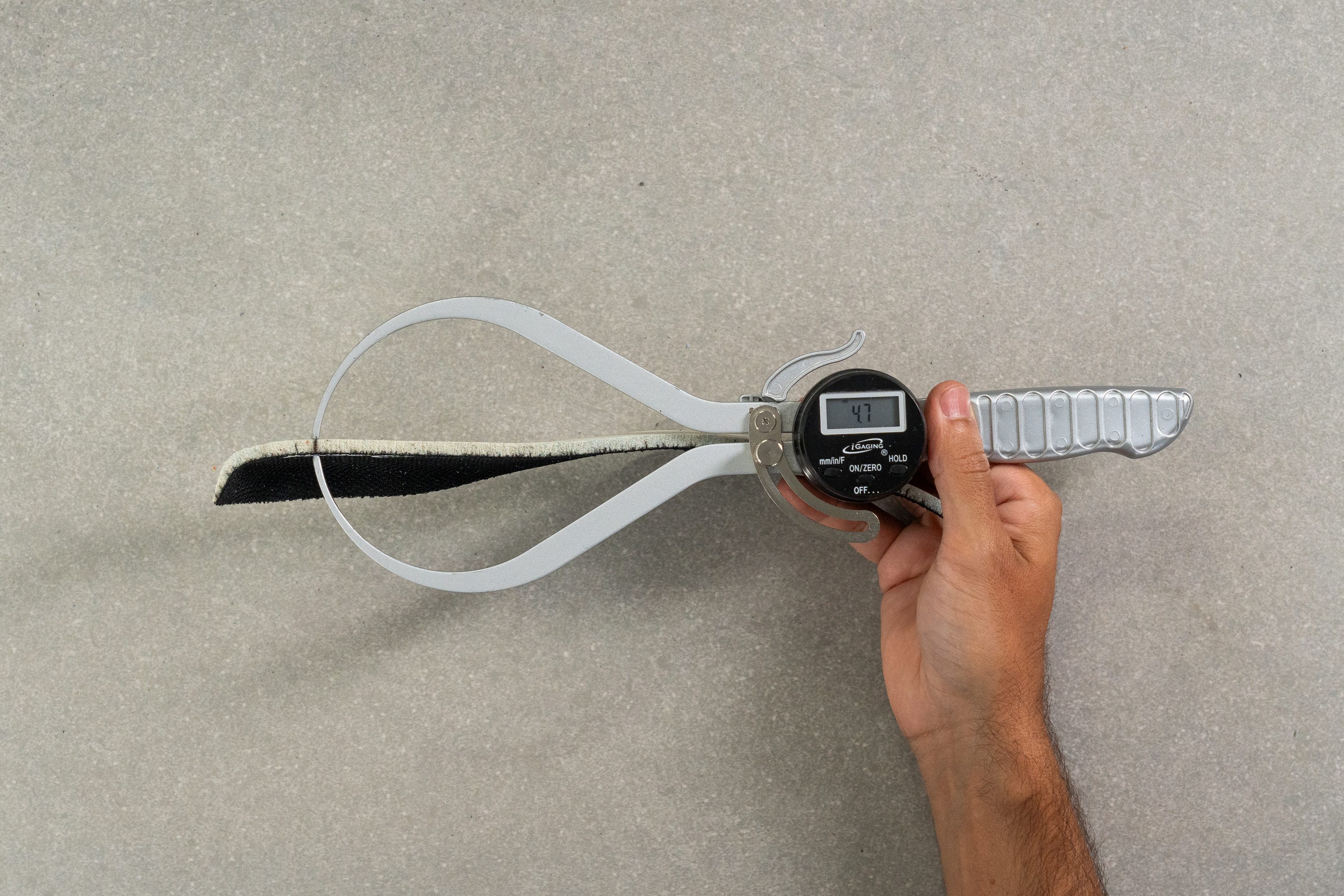
| GT 1000 12 | 4.7 mm |
| Average | 4.5 mm |
Removable insole
You can easily take out the insole, and we were able to swap in custom orthotics and insoles from many other shoes.
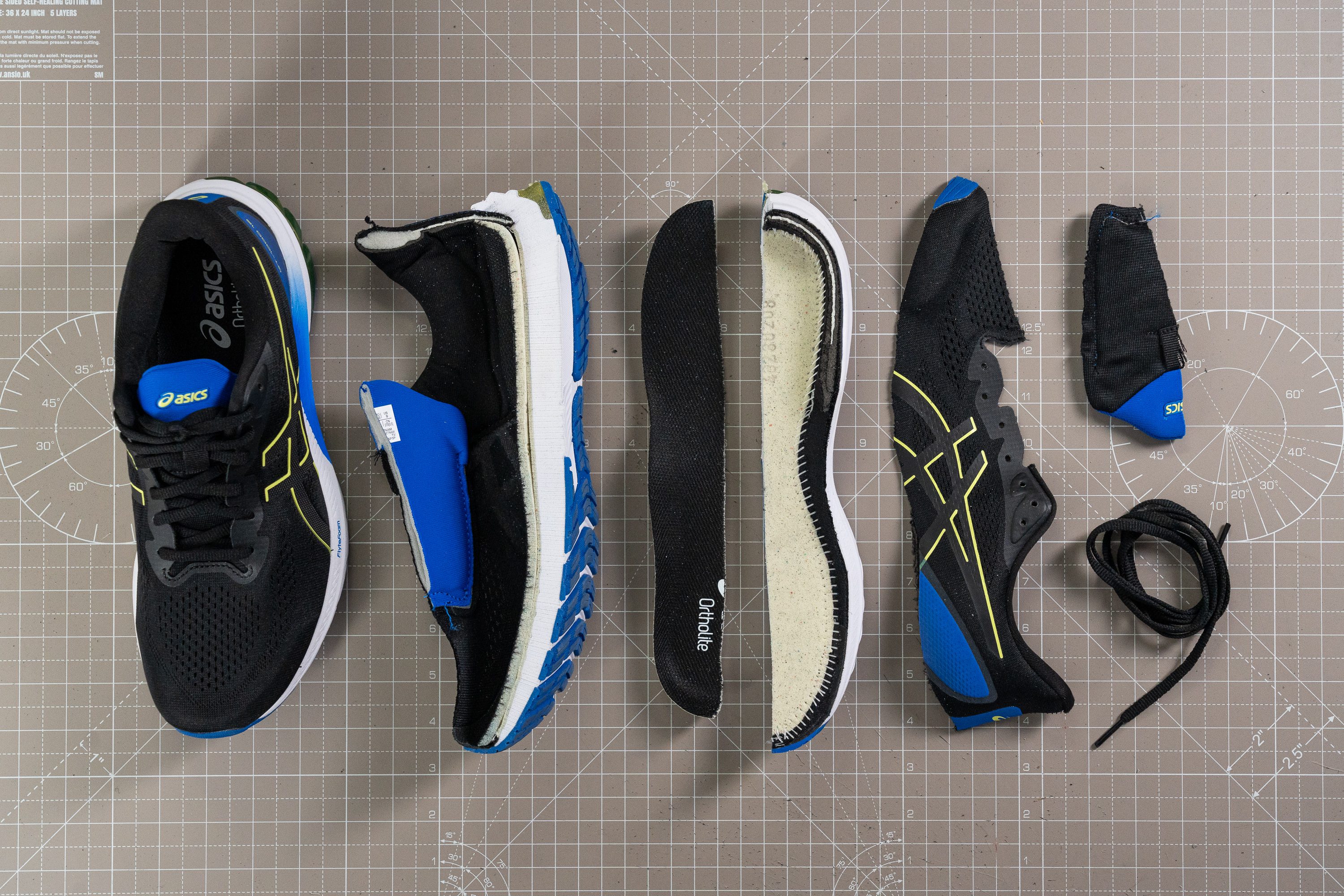
| GT 1000 12 | Yes |
Midsole softness in cold (%)
Unfortunately, Flytefoam doesn't perform well in cold weather—it becomes firmer. We placed the shoe in the freezer for a quick 20 minutes and then tested it.
Our results showed a concerning 20.8 HA reading.
This is a 62.7% increase—which is truly discouraging. This clearly indicates that you'll feel a noticeable difference when using these shoes during cold winter runs.
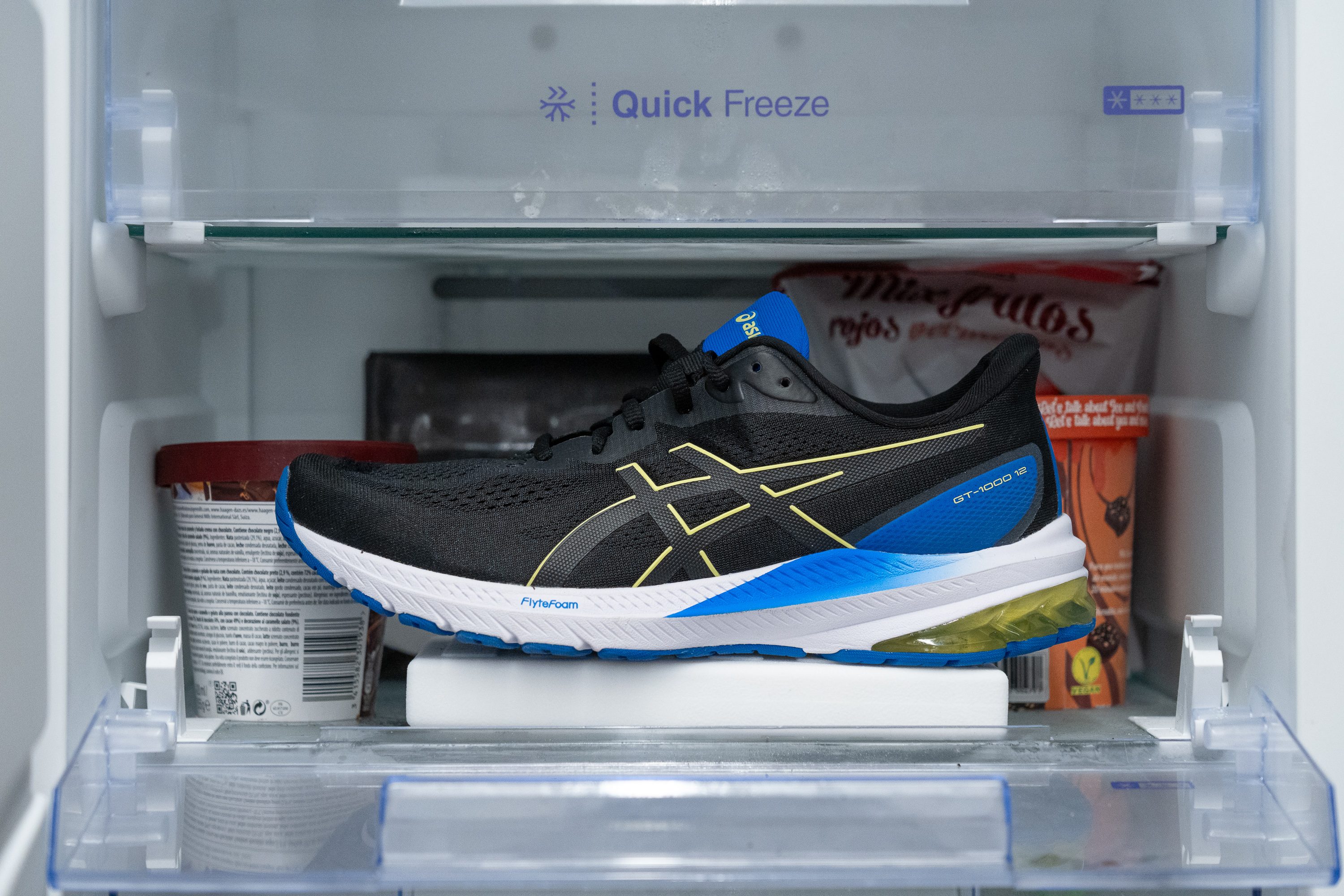
| GT 1000 12 | 63% |
| Average | 24% |
Reflective elements
Unfortunately, ASICS seemed to think that reflective elements were no big deal.

| GT 1000 12 | No |
Tongue padding
After cutting the upper from the shoe in our lab, we discovered the tongue padding was insanely thick.
Hence, we quickly grabbed our caliper and found that it measured a whopping 10.1 mm with two foam layers. That's COMFORT.
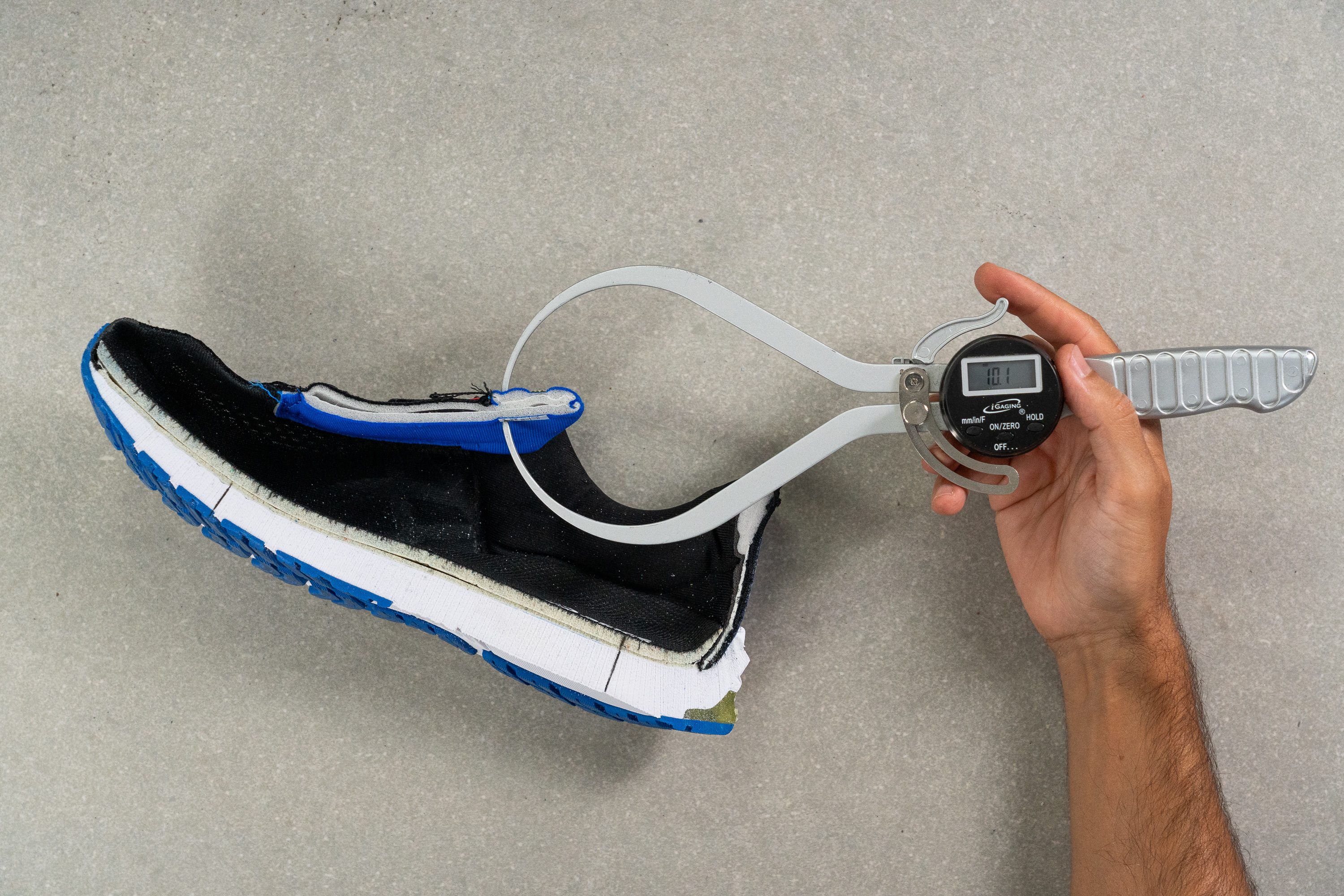
| GT 1000 12 | 10.1 mm |
| Average | 5.8 mm |
Tongue: gusset type
For just a hundred bucks, this shoe is full of awesome features. That's why we hoped to find a fancy gusseted tongue when we popped open the box. Unfortunately, it looks like the v12 still rocks the classic non-gusseted tongue.

| GT 1000 12 | None |
Heel tab
No heel tab on this saga yet, but we've been sliding our feet in without a problem. Anyway, fingers crossed for a tab in v13!

| GT 1000 12 | None |

